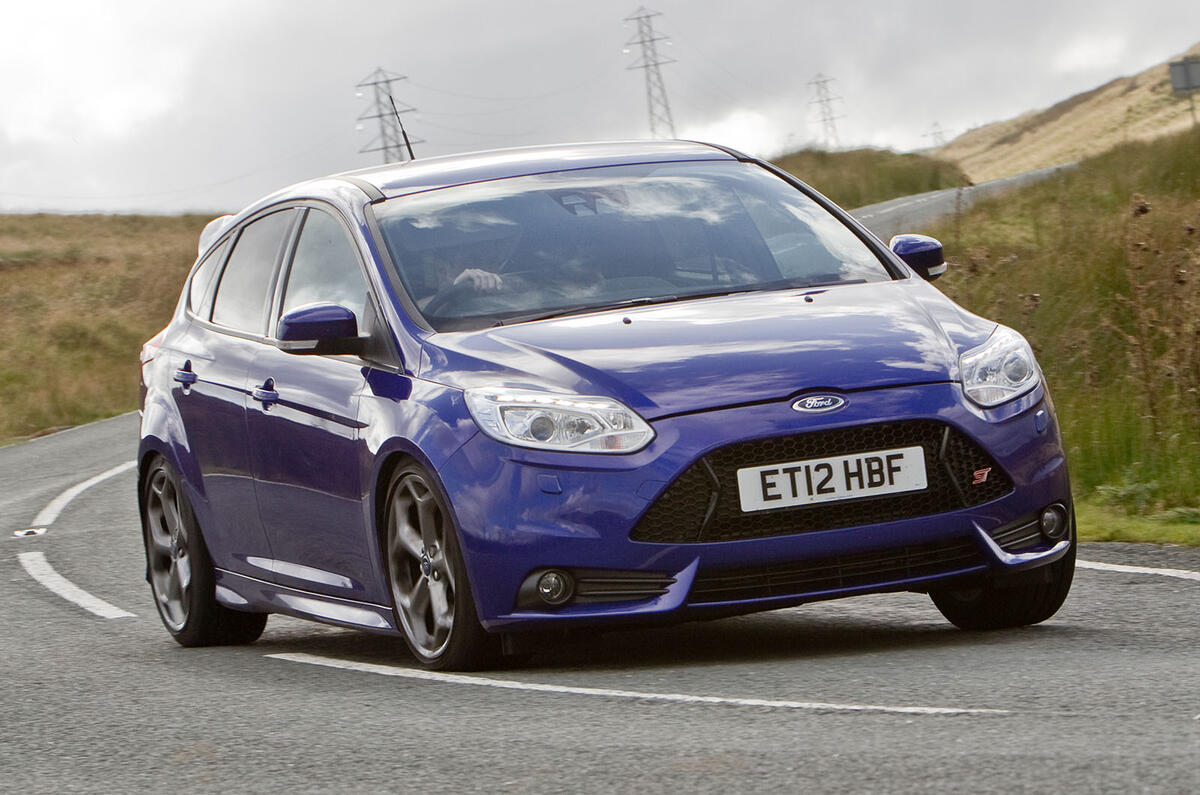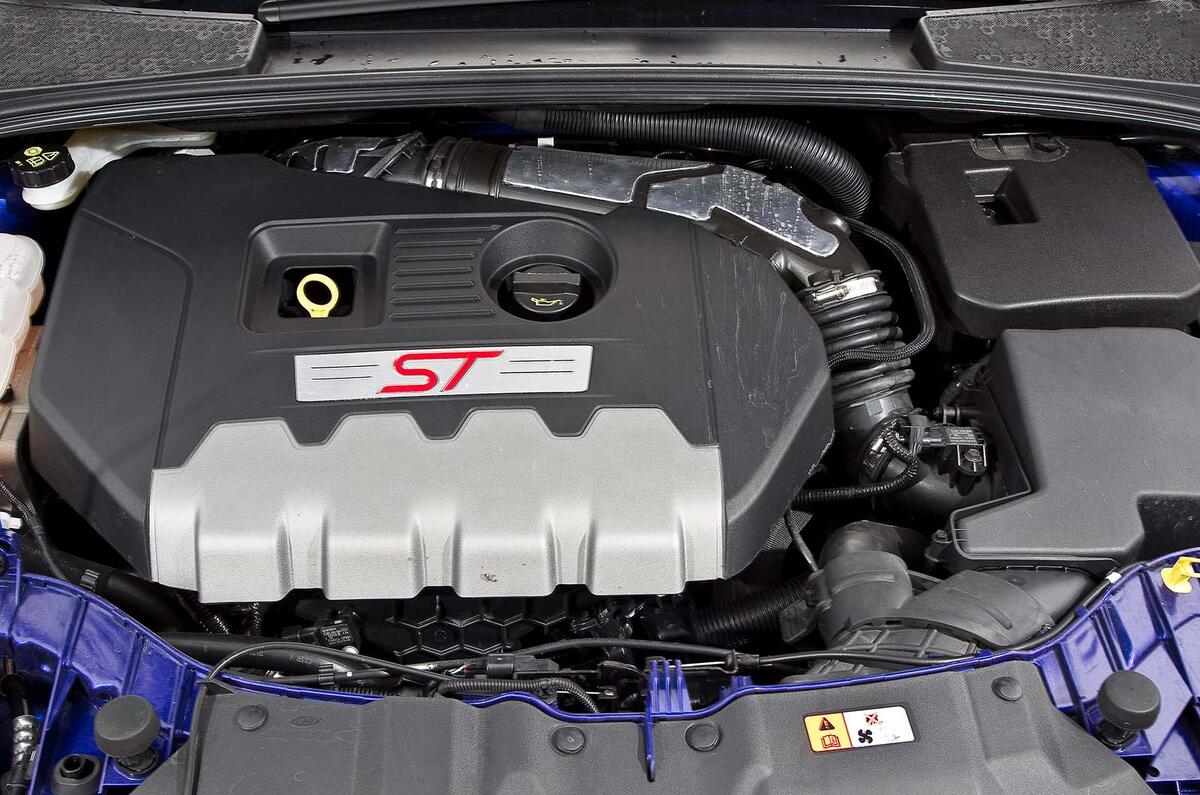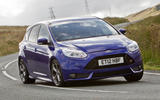We wouldn’t be surprised to find that there’s a rule book when it comes to designing a hot hatchback’s interior. ‘To the engineering team: phone Recaro. Change the steering wheel. Add natty touches, some badges and a few extra dials.’ If such a thing exists, in the Focus ST, Ford followed it to the letter.
It meant that the Ford Focus ST’s major cabin architecture followed that of the standard car. And that, in turn, meant that it was one of the best of its time and continues to exude an impression of quality and solidity that is the envy of most cars in the sector.
The ST-specific additions are welcome. The Recaro seats are plentifully adjustable and, thankfully, are sited considerably lower than those of the second-generation car. However, they remain, to our bums, higher and less adjustable than a Golf GTI’s, although they do have the measure of the Renault Mégane Cup’s.
The leather-bound steering wheel rim is a little fatter and more sculpted than that of a regular Ford Focus, while the gearlever gets an ‘ST’ badge but otherwise continues to perform its task in the same unobtrusive way as that of any of its siblings.
There were two trim levels to choose from: ST-2 and ST-3. The entry-level model came with the ST bodykit, 18in alloy wheels, rear spoiler, sports suspension and partial leather Recaro seats, while inside owners got the delight of Ford's Sync 3 infotainment system complete with DAB radio, sat nav and an 8.0in touchscreen display, dual-zone climate control, heated windscreen and auto lights and wipers.
The range-topping ST-3 trim garnished the Focus with adaptive bi-xenon headlights, rear parking sensors, cruise control, a rear view camera and electrically adjustable leather Recaro seats.





















